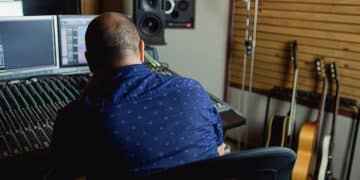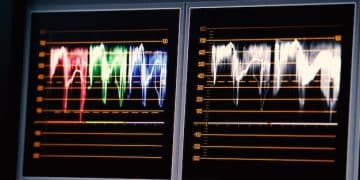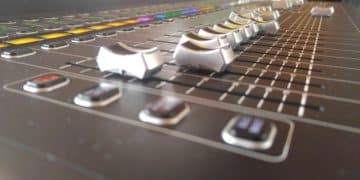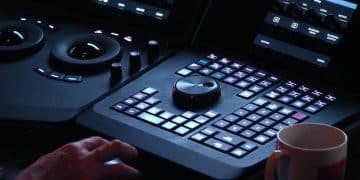The Art of Sampling: A Guide to Finding, Chopping, and Flipping Samples
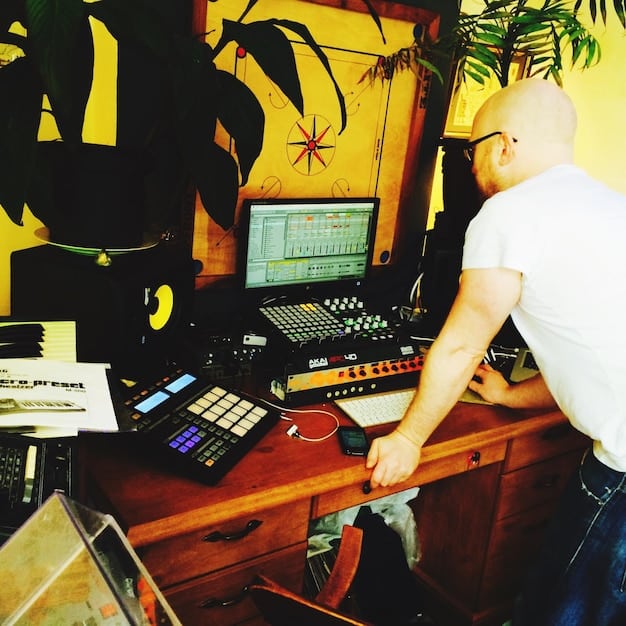
The art of sampling involves discovering unique sounds, creatively manipulating them through chopping and editing, and transforming them into entirely new musical compositions.
The world of music production is constantly evolving, and one technique that has stood the test of time is the art of sampling. Whether you’re a seasoned producer or just starting out, understanding the art of sampling—finding, chopping, and flipping samples—can open up a whole new realm of creative possibilities. Let’s dive in and explore how to master this exciting process.
What is Sampling in Music Production?
Sampling, at its core, is the process of taking a portion (or “sample”) of an existing recording and repurposing it in a new song. This can range from a short drum loop to a longer melody or vocal phrase. The beauty of sampling lies in its ability to transform these borrowed elements into something entirely unique.
Sampling has a rich history, from its early days in hip-hop to its current widespread use across various genres like electronic, pop, and even orchestral music. It allows artists to tap into the past, paying homage to influential tracks while simultaneously creating something fresh and modern.
The History of Sampling
Sampling emerged in the late 20th century with the advent of affordable sampling synthesizers and drum machines. Early pioneers like Grandmaster Flash and Afrika Bambaataa used sampling to create groundbreaking hip-hop tracks, often looping and layering different records to create entirely new soundscapes.
Sampling Today
Today, sampling is more accessible than ever, thanks to advancements in digital audio workstations (DAWs) and readily available sample libraries. While copyright laws have become stricter, creative producers continue to find innovative ways to incorporate samples into their music, often transforming them beyond recognition.
- Genre diversity: Sampling is no longer confined to hip-hop; it’s a staple in electronic music, pop, and experimental genres.
- Technological advancements: DAWs and plugins have made sampling more efficient and creative.
- Ethical considerations: Understanding copyright law is essential for responsible sampling.
In conclusion, sampling is a dynamic and ever-evolving technique that allows artists to build upon the foundations of existing music. By understanding its history, current applications, and ethical considerations, producers can harness the power of sampling to create truly unique and captivating tracks.
Finding the Right Samples
The first step in mastering the art of sampling is finding the right source material. This can be a daunting task, but with a keen ear and a strategic approach, you can unearth hidden gems that will elevate your productions. The key is to explore a wide range of sources and develop a sense for what sounds will work well in your music.
There are several avenues to explore when searching for samples, each with its own unique advantages and challenges. Whether you’re digging through vinyl records, browsing online sample libraries, or recording your own sounds, the possibilities are endless.

Where to Look for Samples
When searching for samples, consider these diverse sources:
- Vinyl Records: Old vinyl records are treasure troves of unique sounds, from obscure funk and soul tracks to forgotten film scores.
- Online Sample Libraries: Websites like Splice, Native Instruments, and Loopmasters offer vast collections of high-quality samples, often categorized by genre and instrument.
- Field Recordings: Recording your own sounds, whether it’s the clatter of city streets or the chirping of birds, can add a unique and personal touch to your samples.
Tips for Sample Hunting
To make the most of your sample hunting efforts, keep these tips in mind:
- Listen Actively: Pay close attention to the nuances of each sound, identifying potential hooks, rhythms, or textures.
- Be Open-Minded: Don’t limit yourself to specific genres or styles; you never know where you’ll find your next great sample.
- Organize Your Finds: Create a system for cataloging and tagging your samples so you can easily find them later.
Finding the right samples is a crucial step in the art of sampling. By exploring diverse sources, listening actively, and organizing your finds, you can build a collection of sounds that will inspire your creativity and elevate your music productions.
Chopping Techniques: Slicing and Dicing
Once you’ve found your samples, the real fun begins: chopping. Chopping involves slicing a sample into smaller segments, allowing you to rearrange, manipulate, and transform the original sound into something entirely new. Mastering different chopping techniques is essential for unlocking the full potential of your samples.
There are several different approaches to chopping, each with its own unique sound and application. From simple time-based slicing to more complex transient-based editing, the possibilities are endless.
Time-Based Slicing
Time-based slicing involves dividing a sample into equal segments based on tempo or beat divisions. This technique is often used for creating rhythmic loops or rearranging melodic phrases.
Transient-Based Slicing
Transient-based slicing involves identifying the points in a waveform where there’s a sudden change in amplitude (transients), such as the beginning of a drum hit or the attack of a note. This technique allows for more precise and nuanced chopping, preserving the natural rhythm and feel of the original sample.
Using DAWs for Chopping
Most DAWs offer built-in tools for chopping and manipulating samples. Features like slicers, samplers, and audio editors make it easy to slice samples, rearrange them, and apply effects. Experiment with different DAWs to find the one that best suits your workflow and creative style.
In summary, mastering chopping techniques is crucial for unlocking the full potential of your samples. By understanding time-based and transient-based slicing, and by utilizing the powerful tools available in DAWs, you can transform your samples into entirely new sonic creations.
Flipping Samples: Transforming the Original
Flipping a sample goes beyond simply chopping and rearranging it; it involves creatively manipulating the sample to create a completely different mood, rhythm, or texture. This can involve using effects, changing the pitch, adding new elements, and more. The goal is to transform the original sample into something unrecognizable, yet still captivating.
Flipping samples requires a combination of technical skill and creative vision. By experimenting with different techniques and pushing the boundaries of what’s possible, you can unlock new and exciting sonic possibilities.
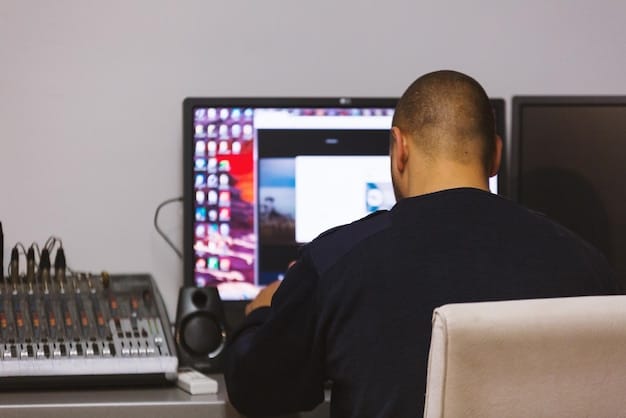
Creative Techniques for Flipping Samples
- Pitch Shifting: Changing the pitch of a sample can dramatically alter its character, making it sound higher or lower, darker or brighter.
- Time Stretching: Adjusting the tempo of a sample without affecting its pitch can create interesting rhythmic effects.
- Adding Effects: Using effects like reverb, delay, distortion, and chorus can transform the texture and timbre of a sample.
Layering and Combining Samples
One of the most effective ways to flip a sample is to layer it with other sounds. This can involve combining different samples together, adding new melodic or rhythmic elements, or even incorporating live instruments.
- Creating Textures: Layering samples with different textures can add depth and complexity to your productions.
- Building Melodies: Combining melodic samples can create entirely new chord progressions or hooks.
- Adding Rhythms: Layering rhythmic samples can create complex and dynamic drum patterns.
Flipping samples is an art form that requires experimentation, creativity, and a willingness to push the boundaries of what’s possible. By mastering techniques like pitch shifting, time stretching, adding effects, and layering, you can transform your samples into entirely new sonic creations.
The Legal and Ethical Side of Sampling
While sampling can be a powerful and creative tool, it’s important to be aware of the legal and ethical considerations involved. Copyright laws protect the rights of original artists, and using copyrighted material without permission can lead to legal consequences. Understanding these considerations is crucial for responsible sampling.
The laws surrounding sampling vary depending on the country and the specific circumstances of the case. However, the general principle is that you need permission from the copyright holder to use any copyrighted material in your music, unless your use falls under fair use or another exception.
Understanding Copyright Law
Copyright law protects original works of authorship, including musical recordings. This means that the copyright holder has the exclusive right to reproduce, distribute, and create derivative works based on their music.
Fair Use and Creative Commons
In some cases, you may be able to use copyrighted material without permission under the doctrine of fair use. Fair use allows for the use of copyrighted material for purposes such as criticism, commentary, news reporting, teaching, scholarship, or research. Creative Commons licenses offer a way for artists to grant specific permissions for the use of their work, such as allowing non-commercial use or requiring attribution.
- Fair Use: Understanding the limitations and scope of fair use is crucial for avoiding copyright infringement.
- Creative Commons: Exploring Creative Commons-licensed music can provide a wealth of royalty-free samples for your productions.
In conclusion, understanding the legal and ethical considerations of sampling is essential for responsible music production. By respecting copyright laws, seeking permission when necessary, and exploring fair use and creative commons options, you can use sampling creatively and ethically while protecting the rights of original artists.
Advanced Sampling Techniques for the Modern Producer
As you become more experienced with sampling, you can begin to explore advanced techniques that will take your productions to the next level. These techniques often involve a combination of chopping, flipping, and innovative sound design, allowing you to create truly unique and captivating sounds.
Advanced sampling techniques require a deep understanding of music theory, sound design, and the capabilities of your DAW. By experimenting with different approaches and pushing the boundaries of what’s possible, you can unlock new and exciting sonic possibilities.
Granular Synthesis
Granular synthesis is a technique that involves breaking down a sample into tiny grains of sound, typically lasting only a few milliseconds. These grains can then be rearranged, manipulated, and layered to create complex textures and soundscapes.
Spectral Processing
Spectral processing involves analyzing the frequency content of a sample and manipulating it in various ways. This can involve filtering out specific frequencies, emphasizing others, or even completely reshaping the spectral profile of the sound.
Integrating Live Instruments with Samples
- Adding Dynamics: Live instruments can introduce natural variations and dynamics that make sampled compositions feel more organic.
- Creating Unique Textures: Combining the textures of live instruments and samples can lead to innovative soundscapes.
Mastering advanced sampling techniques requires a combination of technical skill, creative vision, and a willingness to experiment. By exploring granular synthesis, spectral processing, and integrating live instruments, you can push the boundaries of your music and create truly unique and captivating sounds.
| Key Point | Brief Description |
|---|---|
| 🎵 Finding Samples | Explore vinyl, online libraries, and field recordings for unique sounds. |
| ✂️ Chopping Samples | Slice samples using time-based or transient-based techniques in your DAW. |
| 🔄 Flipping Samples | Transform samples with pitch shifting, time stretching, and layering. |
| ⚖️ Legal/Ethical | Understand copyright, fair use, and Creative Commons to sample responsibly. |
FAQ
▼
Sampling allows producers to re-use portions of existing recordings creatively. It can be used to pay homage to older tracks, create new melodies, or build unique soundscapes that blend familiar and innovative sounds.
▼
You can explore royalty-free sample packs from sites like Splice, Loopmasters, and Native Instruments. Additionally, consider using music released under Creative Commons licenses, ensuring you adhere to the specific terms of each license.
▼
Basic chopping techniques include time-based slicing (evenly dividing a sample) and transient-based slicing (slicing at the start of each note or hit). DAWs like Ableton Live and Logic Pro offer tools for precise slicing and manipulation.
▼
To flip a sample, try changing its pitch, applying effects like reverb or distortion, and time-stretching or compressing it. Layering the sample with other sounds or re-arranging its order can also lead to interesting, unique results.
▼
Always consider the copyright status of any sample you use. Avoid using copyrighted material without permission. If you’re unsure, explore fair use principles or obtain proper licensing to ensure your use is legally compliant and respectful.
Conclusion
The art of sampling is a powerful technique that can elevate your music production to new heights. By mastering the skills of finding, chopping, and flipping samples, while also being mindful of legal and ethical considerations, you can unlock a world of creative possibilities and craft unique and captivating sounds that resonate with your audience.
